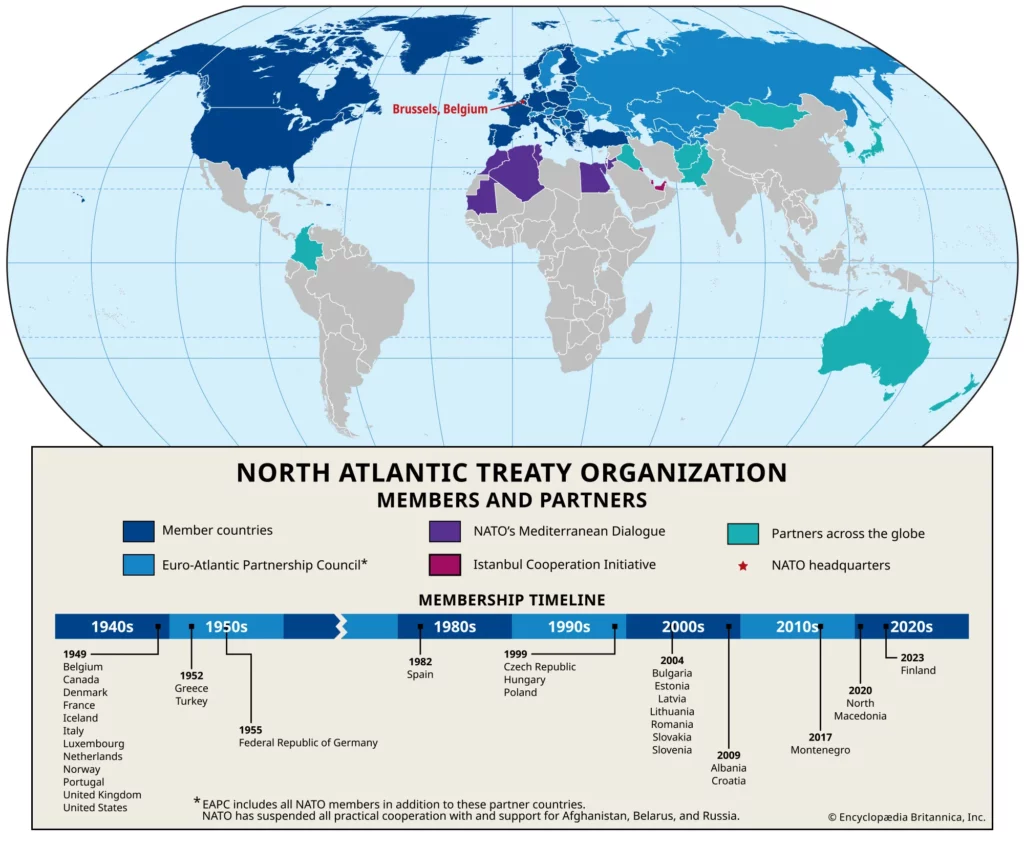Latin America
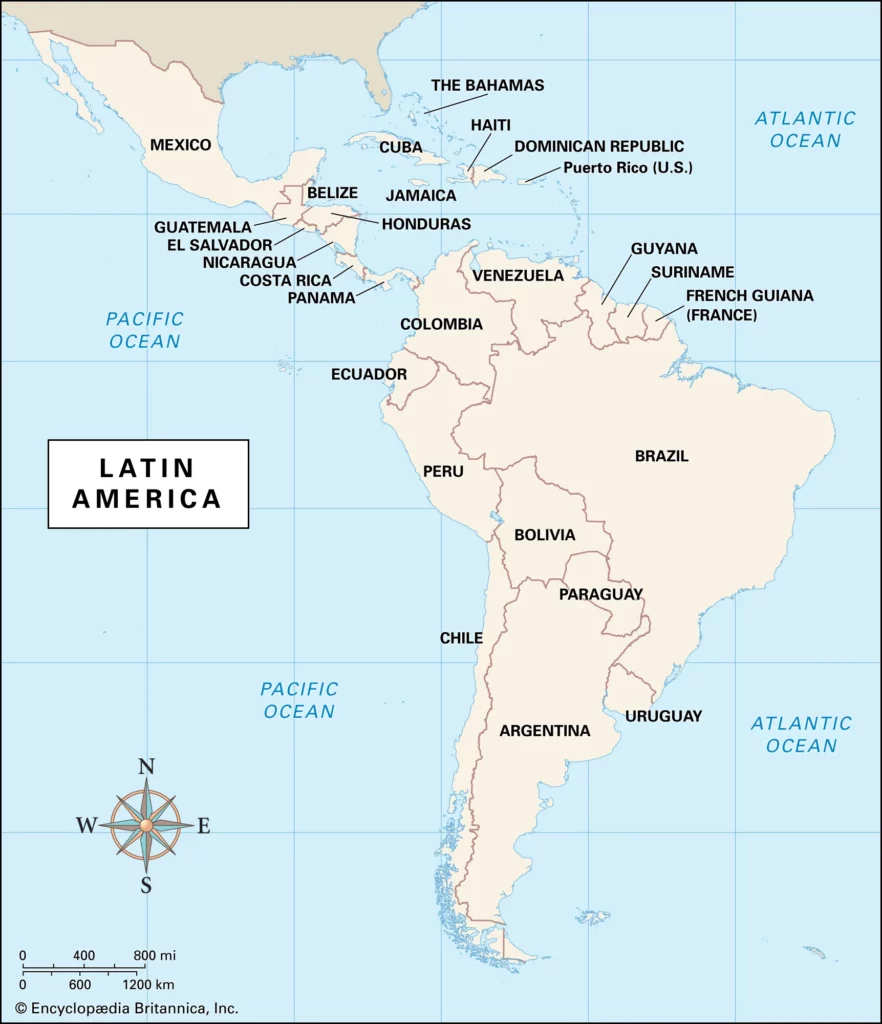
Brazil
- Brazil had gained its independence from Portugal in 1825. It was a monarchy until 1889 when it became a republic. Until 1930, the country was ruled mainly by military dictators but none of them succeeded in establishing a stable system. There were economic, social and political problems which caused several revolutions and attempted coups.
- In 1960s, Julio Goulart, took over and tried to move Brazil gradually towards democracy. He also planned to limit drain of money as multinational companies profit out of country so that the money could then be used to help improve social conditions of the masses.
- He opened diplomatic relations with the USSR, promised to nationalize Brazil’s oil refineries, and opposed economic sanctions against Cuba. This was seemingly a transition towards communist form of economy. This alarmed the United States and thus US hatched coup to remove him. His economic police could not fructify significantly. In scenario of social unrest, Brazil underwent military rule for the next twenty years. It was a period of repression of civil liberties, especially in the early few years.
- During the years of military dictatorship, the government had great success with its economic policies, achieving what many described as an ‘economic miracle’. With the right wing government in rule, foreign loans and investment started to come in with ease and Brazil saw economic boom between 1968 and 1974.
- In late 1970s and early 80s, due to oil price surge and export decline, its deficit grew very fast and it was at this time that Brazil started to think seriously about Nuclear power, as it possessed an abundance of Uranium sources. The 1980s was a period of economic problems and restructuring. Poor economic state escalated corruption, unemployment leading to hyperinflation. Special steps were taken in mid 90s to contain the inflation. Privatization of government firms were taken and economy started to come back on rail of growth, until Russia and South east Asian countries started to decrease their import from Brazil, which affected its economy badly. International Monetary Fund (IMF) came to Brazil’s rescue by providing huge credits so as to prevent economic failure and social unrest. In 2002, Leftist government was formed under Luis Ignacio da Silva (popularly known as ‘Lula’) who guided Brazil on path of economic growth for the next decade.
Venezuela
- It is one of the richest countries in South America due to its vast oil resources. However, majority of the profits were gobbled by few elite investors and successive dictators. In 1945, Romulo Betancourt, the leader of a progressive left-wing party called Accion Democratica, was placed in power and series of reforms were taken. New constitution was framed, taxes were increased on foreign investors and army was kept away from political decisions.
- The radical changes were not accepted well by army and foreign investors and coup brought him down in 1948. For next 10 years, oppressive military was in rule. US Company again started to invest heavily, particularly in iron ore deposits and Venezuela started to export it in great amount. Since masses remained poor and largely unserved, a strike broke out in 1958, and a section of the army removed the dictator Marcos Perez Jimenez( 1952-58). Democracy was restored and Betancourt was voted back into power. He increased the contribution of Oil in Venezuela’s economic growth. No strong communist stance was taken in order to keep US aid in loop.
- Oil boom in early 70s provided enough cash cushion to Venezuela and it became one of the biggest suppliers of oil to the South American countries.
- In 1976, Oil Companies were was partially nationalized and came to be known Petroleos de Venezuela, S.A. (PDVSA). The country remained politically stable until the oil prices started to tumble. At the same time, steel exports also fell sharply and the economy went into disastrous phase. With debt rising, inflation stocking and unemployment running high, social unrest started to become the new social order. It was in this condition Colonel Hugo Chavez attempted coup to dismantle the dictatorship, but failed to achieve his end.
- Half the country’s banking system collapsed due to poor economic state. In 1997, the government started to put more emphasis on diamond mining to reduce reliance on oil. After another failed coup in 1994, Hugo Chavez decided to run for president in the 1998 election. Campaigning on a programme of increased social spending and trading agreements with Cuba, he emerged victorious emphatically.
Mexico
- The Mexicans won their independence from Spain in 1821 and until 1877; they were ruled by series of two emperors, several dictators and some presidents.
- Texas seceded from Mexico in 1936 and became part of the USA in 1845. Mexico was defeated again in a war with the USA (1846-48), which resulted in the loss of about one-third of Mexican territory, including the areas now known as California, New Mexico, Nevada, Utah and Arizona, together with parts of Wyoming and Colorado.
- From 1876 until 1910 country was ruled, except for one short interlude, by a dictator, Porfirio Diaz. This relatively stable period was prospering and led to development of oil production, mining and manufacturing industries. Since ownership was largely in foreign hand, profit didn’t filter down to masses.
- After 1920, the Institutional Revolutionary Party (PRI) gradually came to power. It was dominated by revolutionary and reformist politicians and its main task was to reduce inequality in the society. The PRI remained in power for next 80 years.
- During the time of the second world war, Mexican oil became vital for USA. Following the sinking of some of Mexican oil tankers by German submarines, the Mexicans joined the Allied, side in 1942.
- Post world war, government started investing in infrastructure and agriculture, which gradually resulted in consistent growth rate. Soon, Mexico became a major producer of petroleum, cotton, coffee and sugar, which were largely exported. Mexico became export driven economy and simultaneously was more vulnerable to international market shocks. As the 1970s progressed, Mexico’s exports were badly hit by the world recession leading to near economic crisis.
- The new president, Miguel de la Madrid, elected in 1982 got a huge loan from IMF. However, Mexico could not utilize it effectively and economic situation took further downward turn with oil price crash in mid 1980s. Mexico joined the North American Free Trade Association (NAFTA), along with the USA and Canada, which came into force from January 1994. It turned out to be loss making deal for Mexican farmers.
- In 1994, there was armed uprisingby Zapatista people (Mexico Zapatista Army of National Liberation (ZANL) in province Chiapas. It was one of the most deprived regions of Mexico where Mayan Indians were a marginalized section. Also, there was an infamous political assassination in the same year. Both the events frightened investors who became unsure of their investment and started doubting returns in such scenario of social unrest. Since the economy was widely export dependent and macroeconomic condition of Mexico was in tatters, Ernesto Zedillo (1994-2000) devalued Peso, the Mexican currency. These desperate economic measures could not save the deeply rotten economy of Mexico, thus IMF again came to rescue and provided a loan of 50 billion dollars at the dawn of the 21st century.
Guatemala
- Situated on Mexico’s southern border, Guatemala is one of the poorest states of Latin America. It has been a Spanish colony since the mid-sixteenth century, Guatemala got independence from Spain in 1821, and for a short time it was part of a Mexican empire and then part of a new federal state known as the United Provinces of Central America.
- Eventually, in 1840, it got independent. Often called a Banana economy state, its economy depended on exports of bananas and coffee. Beginning in 1901 United Fruit Company (UFC), an American company owned almost half the country’s best agricultural land and was the majority share-owner in the railways and the electricity system.
- Heavy involvement of US at the cost of local under development led to huge dissatisfaction with this state in 1944 and a strike against the long-serving military dictator was organized. In 1945, finally a democratic elections were heid and the Christian Socialist, Juan Jose Arevalo, was elected president for five years. Much needed reforms on lines of socialism were introduced to distribute benefits of growth to the masses living in poverty.
- Next President Jacobo Arbenz furthered the Arevalo socialist vision and took it to next level by redistributing uncultivated land; even those owned by UFC. It also legalized Communist party. This antagonized US, which could not tolerate the increasing influence of communism.
- The US fomented rebels against the president by imparting military training to Honduras and Nicaragua. He was defamed as communist and declared as a threat to Organisation of American State (OAS). The US supported force invaded Guatemala in 1954 from Honduras and Nicaragua and US resorted to air bombing, leading to the resignation of Arbenz. It was a direct interventionist policy adopted by US, even when it had high commercial stake in it.
- Thereafter, thirty years of military rule had destroyed the economy. The civil war condition was established as guerrilla warfare personnel from communist, vigilante of right wing and death squads of military kept fighting among themselves to show their dominance. In 1993, its constitution and the Supreme Court were dissolved in order to reduce corruption.
- However, Roman Catholic Church brokered constitutional reform and tried to bring civil war to an end. The UN also got involved to negotiate peace among the stakeholders. But it was not until 1996 that the civil war was officially ended. President Alvaro Arzu who was elected in January 1996, had the distinction of signing a peace agreement with the main guerrilla group, Guatemalan National Revolutionary Unity (URNG).The war was over at last, but not before some 200,000 people had been killed during those 36 years. Although the fighting was officially over, there was inevitably a legacy of bitterness and mistrust.
Nicaragua
- Nicaragua was a Spanish colony from the mid-sixteenth century until it became independent in 1821. Then, it was a part of the Mexican empire for a short time and after that it became a member of the United Provinces of Central America until 1840, when it achieved full independence.
- However, it remained politically unstable, punctuated by periods of ruthless military dictatorship and plagued by foreign intervention, especially from the USA. For the remainder of the 19th C. AD internal politics were dominated by the power struggle between liberals, whose main power base was in Leon, and the conservatives, based in Granada.
- The President, Jose Santos Zelaya was responsible for some important changes in early 20th century and attempted to reduce the long rivalry and feuding between Leon (liberal power base) and Granada (conservative power base) and between liberals and conservatives. He had visions of a united states of Central America and to achieve this ambition he stirred up unrest in other states.
- The US found this as an extremely destabilizing act and considered a threat to their commercial interest. General Juan Estrada organized an uprising against the President with the help of US navy. In 1912, US supported conservative government came to power and stayed until 1925, when US decided to leave the country for a brief period. Immediate unrest that followed it, convinced US to come back and brought back the stable government until Somoza family came to power, which ruled with iron fist until 1979. The US used its territory as a military base to attack other adjoining American countries. Sandinistas defeated the last Somoza, who had already become highly unpopular due to heavy corruption.
- Although he adopted a mixed economy, the US administration saw him as staunch communist. His socialist drive in the form of land redistribution and very close relationship with Cuba convinced Reagan of his communist intention.
- The US adopted multiple methods to bring his government down. From trade sanction to credit squeeze; all sort of economic means were used to weaken the economy from inside. Even financial help to Nicaraguan Democratic Force (FDN) known as Contras was given to wage guerilla war and destroy public utilities and basic infrastructure. Even ICJ (International Court of Justice) found US as complicit and asked them to pay the compensation, which US denied to pay.
- Eventually, with increasing resentment among other South-American countries with US interventionist attitude and US congress’ lack of support to the executive for their support to Contras, brought this complicity to its end in 1987. In 1987, President Oscar Arias of Costa Rica tried to achieve a common peace agreement among South American countries but it failed to achieve such feet. In the backdrop of political instability, Violeta Barrios de Chamorro became the first female president to be elected in Latin America and her attention was to pacify Guerilla war and to promote economic growth.
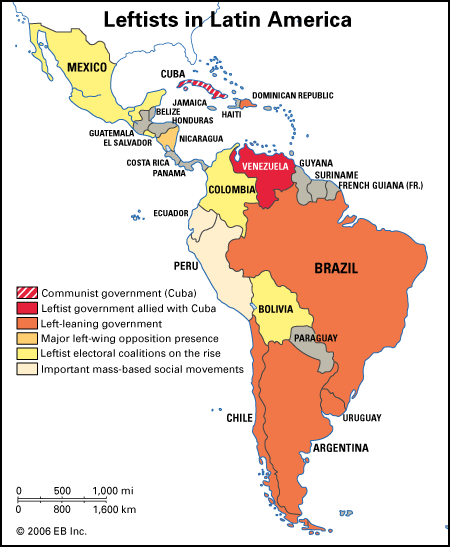
Europe
- The Europe, in the aftermath of the Second World War, was in a state of utter misery and desolation. While Germany, Italy and Western USSR were ravaged after the war, Britain and USA also suffered financially due to enormous expenditure in the war.
- Europe faced the overwhelming task of literally rebuilding itself from scratch. Many leaders thought the best way to reconstruct Europe would be through a joint effort. They wanted European states to come together under a federal system of government and form a United Europe, similar to the United States of America.
- However, after the Marshall plan of America, Europe got divided into two parts. While the countries of Western Europe made use of the American aid, USSR did not allow countries of Eastern Europe to accept the plan to ensure their dominance over these countries. Since then, the two parts of Europe developed were separately kept apart by Stalin’s ‘iron curtain’.
Eastern Europe
Efforts of Unity
- The Eastern Europe nations were forced into a kind of unity by the USSR. By 1948, the Communist bloc consisted of nine states- the USSR, Albania, Bulgaria, Czechoslovakia, East Germany, Flungary, Poland, Romania and Yugoslavia. Stalin tried to make all the countries of the Communist bloc into a replica of the USSR by imposing the same political, economic and educational systems in addition to the introduction of Five Year Plans in these countries. All these countries had to carry out the bulk of their trade with Russia, and their foreign policies and armed forces were controlled by Russia.
Molotov Plan
- The Molotov Plan was the first Russiansponsored step towards the economic unification of the Eastern bloc. This was a response to the American offer of Marshall Aid for Western Europe. As Russians did not allow any of their satellite nations to accept American aid, Molotov, the Russian Foreign Minister offered an alternative to these countries. The Plan was basically a set of trade agreements between the USSR and its satellites, designed to boost the trade of Eastern Europe.
Communist Information Bureau
- The Communist Information Bureau was established by the USSR with a political motive to ensure that all the governments followed the same line as the government of the USSR. According to Cominform, all the communist states had to become members and follow Russian-style communism.
Council/Mutual Economic Assistance
- The COMECON was established by the USSR in 1949 with an aim to help plan the economies of the individual states.
- While industries were nationalized, agriculture was collectivized i.e. organized into a system of large, state owned farms.
- Russian leader Khrushchev tried to organize the Communist bloc into a single, integrated economy through the platform of COMECON. He planned to develop East Germany and Czechoslovakia into major industrial area where as Hungary and Romania were to concentrate on agriculture. However, this provoked hostility among many states forcing Khrushchev to change his plans and allow more variations within the economies of the different countries.
- Though the Eastern bloc enjoyed some success economically, with steadily increasing production, their average GDP and efficiency were below those of the European Economic Community countries of Western Europe. The economies of the Eastern bloc states experienced difficulties in the 1980’s with high inflation and fall in the standard of living.
- The Communist bloc had a good record in social services and in some eastern European countries, health services were as good as, if not better than those in some Western European countries. For example, in Britain in 1980, there was, on an average, one doctor for every 618 people whereas in the USSR, there was one doctor available for every 258 people, and in Czechoslovakia the figure was 293. Only Albania, Yugoslavia and Romania had a poor ratio than Britain.
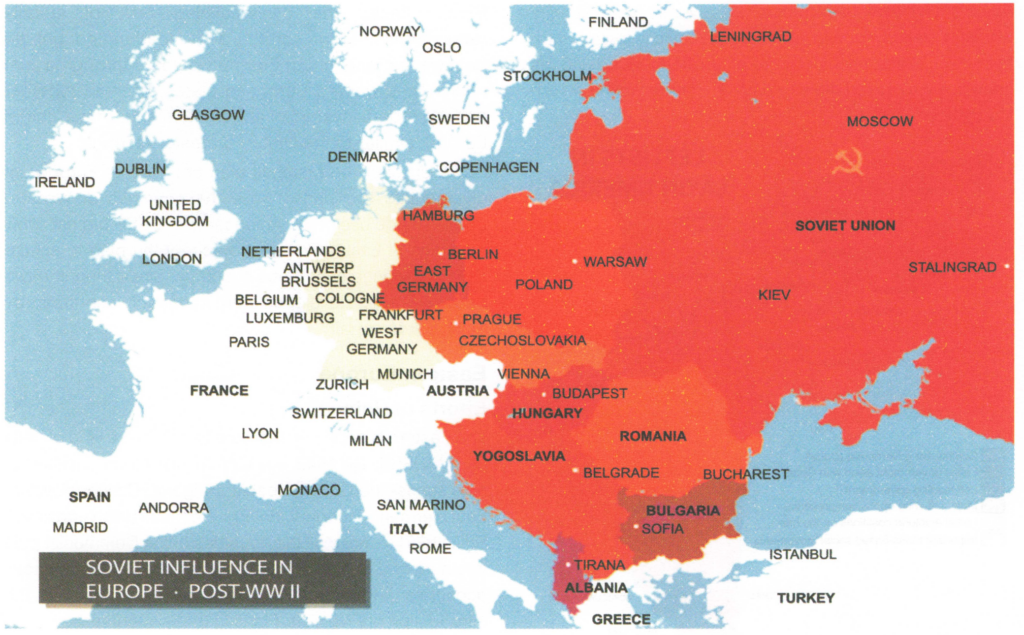
Warsaw Pact
- The Warsaw Pact was a collective defence treaty signed in Warsaw among the Soviet Union and seven Soviet satellite states of Central and Eastern Europe in 1955. The member countries promised to defend each other against any outside attack.
- However, the armies of the member states came under overall Russian control. Ironically, the only time Warsaw Pact troops took part in joint action was against Czechoslovakia, one of their own members, when the USSR disapproved of Czech internal policies in 1968.
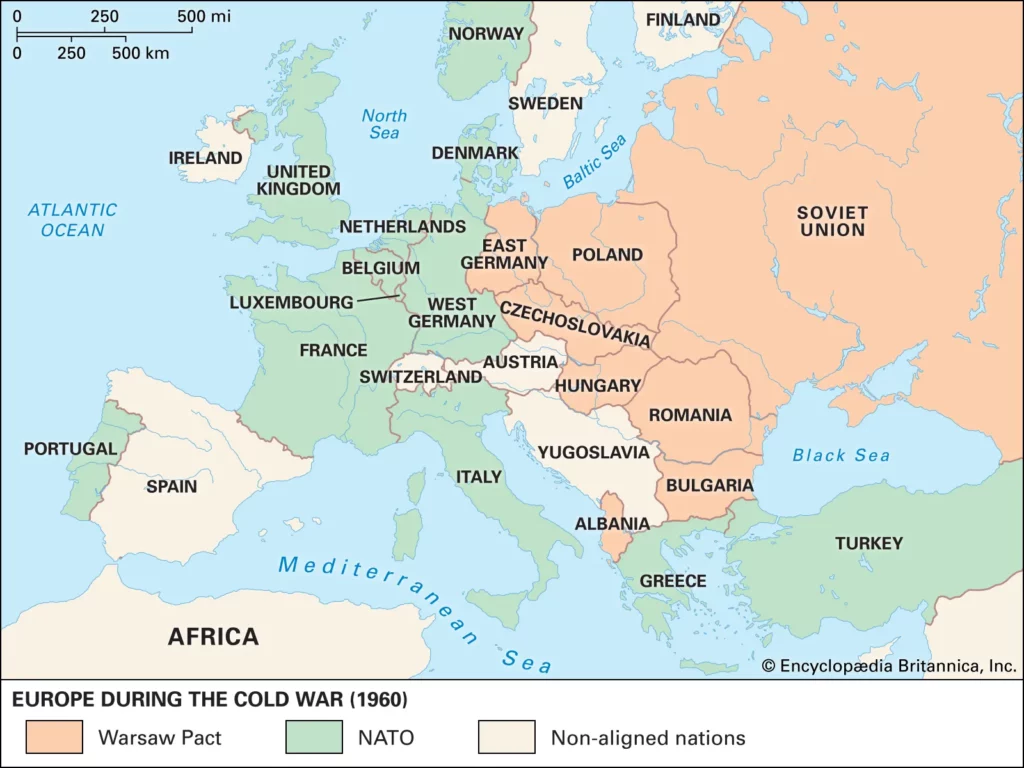
Tensions in Eastern Bloc
- In the early years of the Eastern bloc, Russia felt the need to suppress any leader or movement which threatened solidarity of the Communist bloc. The Russians did not hesitate to use force against the offenders. With increasing rifts with Yugoslavia, Stalin arrested many communist leaders in Hungary, Bulgaria, Czechoslovakia, Poland and Albania who attempted to follow independent policies like Tito of Yugoslavia.
Resistance of Yugoslavia against Russia
- Yugoslavia was the first nation to stand up against Russia. Here, the communist leader, Tito, was legally elected as leader of the new Yugoslav Republic in 1945. After falling out with Stalin in 1948, he was determined to follow his own brand of communism and objected to the constant Russian interference in Yugoslavia’s affairs. Tito wanted to have the freedom to trade with the west as well as with USSR. Stalin stopped the economic aid and expelled Yugoslavia from the Cominform in expectation that the country would not survive and thus Tito would be forced to resign. Tito remained in power and continued to operate communism in his own way. This included full contact and trade with the west and acceptance of aid from the International Monetary Fund (IMF).
- The Yugoslavia reversed the process of centralization and denationalized industries as well as agriculture making them public properties. These properties were managed by workers’ representatives through councils and assemblies. Many Marxists thought this was a better way to run a communist Josip BrozTito state, rather than the over-centralization of the USSR.
- However, there were some weaknesses like the workers’ unwillingness to sack colleagues and a tendency to pay themselves too much. These led to over employment and high costs and prices. Nevertheless, with its capitalist elements, this was an alternative Marxist system which many developing African states, like Tanzania, found attractive. Khrushchev decided against waging a war and tried to improve relations with Tito. He visited Belgrade, the Yugoslav capital, in 1955 and apologized for Stalin’s actions. The breach was fully healed the following year when Khrushchev approved Tito’s successful brand of communism called Information Bureau,from Communist Information Bureau Informbiro. After Stalin’s death in 1953, there were signs that the satellite Russian states would be given more freedom as Khrushchev used it to criticize many of Stalin’s policies. Khrushchev seemed prepared to concede that there was different roads to socialism. In 1956, he abolished the Cominform, which had been annoying Russia’s ally ever since it was formed in 1947.
Crisis in Poland
- In 1956, Poland witnessed a massive anti-government and anti-Soviet demonstrations in Poznan. The workers demanded ‘Bread and Freedom’ as they protested against poor living standards, wage reductions and high taxes. Though the crowd was dispersed by Polish forces, tensions remained high as Russian tanks surrounded Warsaw, the Polish Capital city.
- The Russians, however, compromised and reappointed Gomulka, who was earlier imprisoned on Stalin’s orders, as the First Secretary of the Communist Party. Russia agreed on the Polish; mode of communism as long as Poland remains with Russia in matters of foreign affairs. Relations between the two states continued swiftly, as Russians felt that Gomulka could be trusted not to stray too far.
Hungarian Revolution
- The Hungarian Revolution of 1956 was a spontaneous nationwide revolt against the government of the Hungarian People’s Republic and its Soviet – imposed policies, lasting from 23rd October until 10th November 1956. Though leaderless when it first began, it was the first major threat to Soviet control. Despite the failure of the uprising, it was highly influential and came to play a role in the downfall of the Soviet Union decades later.
- After Stalin’s death in 1953, the pro-Stalin leader of Hungary, Rakosi was replaced by a more moderate
communist, Imre Nagy. However, Rakosi continued his interference and overthrew Nagy in 1955. Since then, resentment steadily built up against the government until it exploded into a mass uprising in October 1956.
Causes of Mass Uprisings
- Rakosi’s brutal regime became unpopular as more than 2000 people were executed and more than 200,000 others were sent to prisons and concentration camps.
- While living standards of ordinary people were getting worse, leaders of Communist Party were enjoying luxurious and comfortable lives.
- There was an intense anti-Russian feeling.
- Gomulka’s return to power in Poland encouraged the Hungarians to resist their government.
Consequently, Rakosi was overthrown and Nagy became the prime minister. Also, the popular Roman Catholic Cardinal Mindszenty , who had been in prison for six years for his anticommunist views, was released from prison. The USSR was content to compromise as they did in Poland but Nagy’s announcement of a government including members of other political parties and talks of Hungarian withdrawal from the Warsaw pact irked the Russians .
The Russians could not let this happen as it would encourage other nations of the eastern bloc states to do the same. If Nagy had his way , Hungary might have become a non -communist state, ceasing to be an ally of the USSR. Consequently, the Hungarian capital, Budapest was bombarded by the Russian tanks on November 3. The Hungarians fought hard for two weeks before Russians got the control of Hungary. More than 20,000 people lost their lives, more than 20,000 were imprisoned and as many as 200,000 people left the country for the West. Janos Kadar was installed as the new Hungarian premier who stayed in power till 1988.
Impact
- The events in Hungary produced ideological fractures within the Communist parties of the world, particularly in western Europe, with great decline in membership as many in both western and communist countries felt disillusioned by the brutal Soviet response.
- The communist parties in the West would never recover from the effect the Hungarian Revolution had on their membership, a fact that was immediately recognized by some, such as the Yugoslavian politician Dilas who shortly after the revolution was crushed said that “ the wound which the Hungarian Revolution inflicted on communism can never be completely healed”.
Crisis in Czechoslovakia
- Since the military intervention in Hungary, the USSR did not interfere directly anywhere until 1968 when they
felt Czechs breached too far away from the accepted communist line. They even allowed Yugoslavia, Romania and Albania to continue with their own versions of Communism. In 1962, Russia had to drop its idea of asking each satellite state to be focusing on producing one particular product after strong protests from Hungary, Italy and Poland as these three nations wanted to build an all-round economy. The Russians did not interfere in any country, until the introduction of policies that could threaten Communist Party domination. - The Czech government , run by a pro- Moscow communist, Antonin Novotny faced opposition from people due to several reasons.
- Being industrially and culturally advanced than most of the Eastern bloc people, they did not like over -centralized Russian control of their economy.
- When Czechoslovakia was an independent state between 1918 and 1938, the Czechs enjoyed great freedom, but now they resented all the restrictions on personal liberty. There was no freedom of speech and newspapers, books and magazines were heavily censored. Also, anyone who criticized the government could face arrest.
- When people tried to hold protest marches, they were dispersed by the police brutally.
- Tensions heightened in January 1968 when Novotny was forced to resign as Alexander Dubcek became First Secretary of the Communist Party. He and his supporters introduced a completely new programme in which:
- The Communist Party would no longer dictate policy.
- Industry would be decentralized ; this means that factories would be run by works councils instead of being controlled from the capital by party officials.
- Instead of farms being collectivized ( owned and run by the state ), they would become independent cooperatives.
- Trade unions were provided with wider powers.
- More trade was allowed with the West.
- There would be freedom to travel abroad and the border with West Germany, which had been closed since 1948, was immediately thrown open.
- Freedom of speech and freedom for the press was introduced. Criticism of the government was encouraged.
- He was very careful to assure the Russians that Czechoslovakia would stay in the Warsaw Pact and remain a reliable ally.
- As per Dubcek, the country would remain communist, but the government should earn the right to be in power by responding to people’s wishes. He called it ‘socialism with a human face’.
- In 1968, as this programme was carried into operation, the Russians became restless and invaded Czechoslovakia with the combined army of Russia, Poland, Bulgaria, Hungary and East German troops. The Czech government did not retaliate to avoid bloodshed.
- Instead, the Czech people tried to resist passively by going on strike and holding peaceful anti-Russian demonstrations, but in the end the government was forced to give up and abandon its programme. Consequently, Dubcek was replaced by Gustav Husak, a communist leader managed to stay in power until 1987.
Collapse of Communist Bloc
- Though Russia had the control of East Europe, displeasure against Russia was quite visible, especially in Poland and Czechoslovakia.
- In Poland, Gomulka had to resign after a series of riots in 1970, and his successor Gierek was also forced to resign in 1980 after the industrial unrest, food shortages and strikes in the port of Gdansk and other Polish cities. An independent trade union movement, known as Solidarity was formed. Despite the surrounding of Polish border, Russians did not invade as they were unwilling to risk another military intervention so soon.
- The communist bloc was troubled by the Helsinki Agreements (1975). It caused problems in the communist bloc as it talked about increased cooperation in economic affairs and peacekeeping, and to protect human rights. Though these agreements were signed by most of the European states, even the people in the USSR and other communist states started accusing their governments of failing to allow basic human rights.
- In Czechoslovakia, a human rights group named as Charter 77 was formed in 1977. During the 1980s, it became more outspoken in its criticisms of the despotic Husak government in power.
- Also, almost all the communist states were suffering serious economic problems, much worse than those in the EC. Though not many people in the west realized it at the time, communism and the Communist bloc were quickly moving towards disintegration.
Reasons for Collapse of Communism in Eastern Europe
- Within a short span between August 1988 and December 1991, communism in Eastern Europe was swept away. Poland led the way in rejecting communism, followed by Hungary and East Germany and the rest, until 1991, when the USSR disintegrated. The reasons for the dramatic collapse are as under:
- Communism could not provide the standard of living which should have been possible, given the vast resources available. The over-centralized and in-bound trading policies (trading within the eastern bloc) made the economy inefficient. Moreover, growing global contact made the people feel that the communist system was flawed.
- The policies of Mikhail Gorbachev, who became leader of the USSR in March 1985, started the process which led to the collapse of the Soviet Empire. Recognizing the failure of the system, he tried to save communism by revitalizing and modernizing it. He introduced new policies of glasnost (openness) and perestroika (economic and social reform). Also, he encouraged the system of criticism in the drive for improvement, provided nobody criticized the Communist Party. Unfortunately, once the process of reform began, Gorbachev found it difficult to control the situation, criticism inevitably turned against the Communist Party itself as people demanded more and more. Similarly, the communist leaders of satellite nations could not adapt to the situation which eased the way towards collapse of the USSR.
North Atlantic Treaty Organization
- The North Atlantic Treaty Organization (NATO) is a political, military alliance between several North American and European states, which came into existence in 1949.
- Europe suffered politically, economically as well as emotionally during the second World War. As there was danger of USSR domination, European nations decided to join the alliance under the US leadership to confront the Soviet challenge.
- NATO seemed to be developing impressively and it was widely believed that NATO had deterred the USSR from attacking the West Germany. However, some nations like France did not like dominance of America in NATO. NATO was also criticized by Soviet bloc and NAM (Non-Aligned Movement) countries.
- It holds a significant place in world history as it brought the whole Western Europe under a defence organization and developed a close cooperation among them.
